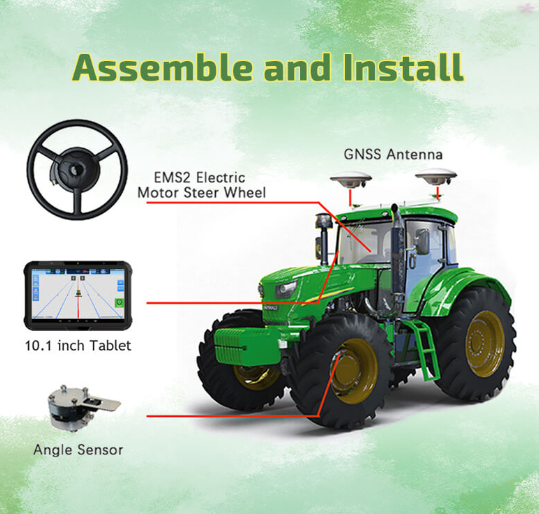The navigation system is the set of instruments, equipment, and charting aids used to determine a craft's position, course, and heading. It includes the compass, sextant, and GPS. Let's learn more about them.
A navigation system is a system that helps people and vehicles find their way from one place to another. Navigation systems can be either ground-based or space-based. Ground-based navigation systems use landmarks, roads, and other features on the ground to help people and vehicles find their way. It may be as simple as a magnetic compass or sextant or as complex as a global positioning system.
Navigation is a system that is a critical component of any car. It helps drivers get from one place to another, while also providing important information along the way. Satellite navigation systems use a constellation of satellites that are in orbit around the Earth. The satellites transmit signals that allow a GPS receiver to calculate its position. By knowing its position, the GPS receiver can provide navigation information, such as directions to a destination.
The Global Positioning System (GPS) is a space-based navigation system that provides location and time information in all weather conditions, anywhere on or near the Earth where there is an unobstructed line of sight to four or more GPS satellites.
If you've ever been lost while driving, you know how frustrating it can be. Fortunately, navigation systems can help you get where you're going.
It is a system that helps you get from one place to another without getting lost. Navigation systems can be used in cars, boats, airplanes, and even on foot. A GPS is a must-have for anyone who wants to get from one place to another without getting lost.

There are many types of navigation systems, each with its advantages and disadvantages. The type of system you choose will depend on your needs and preferences.
- GPS
GPS navigation is a device that uses the Global Positioning System to determine the device's precise location and provide directions to the user. GPS navigation systems can be used for a variety of purposes, including automotive navigation, hiking, and geocaching.
- WAZE
Waze is a free, 100% user-supported GPS navigation app that relies on drivers sharing real-time road information and traffic updates to help other drivers navigate their way around town. It's kind of like a cross between Google Maps and a social network, and it's an incredibly useful tool for getting around town, especially in unfamiliar territory.
- Google Map
Google Maps offers some features to help you get where you're going, including turn-by-turn directions, traffic information, and public transit options. It is the best navigation system because it is the most accurate and up-to-date.
It is also the most user-friendly and has the most features. If you're looking for the best way to get around, there's no doubt that Google Maps is the way to go.
With the development of technology, people's life becomes more and more convenient. Many high-tech products are designed to make our life more comfortable and efficient. Among, the car navigation system is a good example. Nowadays, car navigation system is more and more popular with people and it plays an important role in our life.
- Improve the quality of life
A navigation guidance system can help you get where you need to go without getting lost. It can also help you find the shortest or fastest route to your destination, and it can provide turn-by-turn directions to help you get there. A navigation guidance system can also help you avoid traffic congestion and road closures.
- Increased safety
The navigation guidance system is the most important safety feature of an aircraft. It is the system that tells the pilot where the aircraft is, what its speed and altitude are, and what it’s heading is. It is also the system that tells the pilot where the destination is and how to get there.
- Greater efficiency
With the increasing use of in-vehicle navigation systems, there is a need to monitor their effects on overall traffic congestion. This is especially important in large metropolitan areas where real-time traffic information is critical to efficient travel. In-vehicle navigation systems have been shown to increase traffic efficiency and reduce traffic congestion.
- Save time
A navigation guidance system can help you save time by keeping you on track and helping you avoid getting lost. If you are running late for an appointment, the navigation guidance system can help you find a shortcut to get there faster. Moreover, if you've ever been lost while driving, you know how frustrating it can be. Not only do you waste time driving in circles, but you also waste gas and increase your stress levels.
5 Tips for Getting the Most Out of Your Navigation System
Here are five tips to get the most out of your system, whether you're using it for work or play.
- Make sure you have the most up-to-date maps.
- Know your destination before you start driving.
- Choose the right route for your needs.
- Allow extra time for unexpected delays.
- Use your navigation system's features to your advantage.
If you're looking for a new way to navigate, you may want to check out SMAJAYU. This new navigation guidance system is said to be more accurate and user-friendly than GPS.
The SMAJAYU navigation guidance system is a new technology that promises to revolutionize the way people navigate. The system uses a combination of GPS, sensors, and artificial intelligence to provide users with real-time, step-by-step directions that are tailored to their individual needs. These systems offer many advantages over traditional GPS navigation systems, such as portability, flexibility, and low cost.


